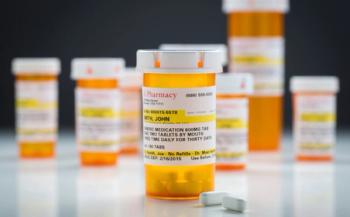
Adherence: Addressing Pharma's Last-Mile Problem
Addressing adherence with c-suite sponsorship and at scale has the capacity increase revenue, improve patient outcomes and lower health care costs, writes Tom Kottler.
Pharmaceutical manufacturers have done more to save lives over the past century than any other industry. They have developed drugs that cure sicknesses and turned diseases that were once death sentences into manageable conditions. And they have made money while doing this; in 2017 alone, pharmaceutical sales topped 1 trillion dollars.
But pharma’s continued dependence on tactics such as raising drug prices to hit profit targets just aren’t sustainable long-term. Further, price increases – responsible for 100 percent of pharma’s 2016 earnings per share (EPS) growth, according to Credit Suisse – do not improve patient outcomes or save lives.
Addressing adherence, however, with c-suite sponsorship and at scale, has the capacity to produce the pharmaceutical triple aim: increased revenue, improved patient outcomes and lower health care costs.
Adherence in a financial perspective
Up to 30 percent of prescriptions to treat chronic conditions are never filled, and across major indications, more than 50 percent of patients stop taking their medications within the first year. In financial terms, nonadherence costs the pharmaceutical industry $637 billion in lost revenue each year, according to Capgemini.
What other industry would leave such a monumental last-mile problem unaddressed? What other industry would spend billions to make, market and sell a product to customers, and then not invest in selling more of the same product to the same customers? The issue is further exacerbated when considering that pharma only has a limited amount of time to recuperate this revenue – the life of the medication’s patent.
To date, not one pharmaceutical company has hired a chief adherence officer tasked with going after this more than half-a-trillion dollar revenue opportunity. Instead, pharma’s standard response has been to implement small-scale, pilot programs at the brand level.
This cautious, brand-by-brand approach has offered, at best, short-term adherence improvements limited in reach and scope.
What would happen with an enterprise-level adherence program?
We know that increased adherence improves patient outcomes and decreases overall health care costs. Now, according to a new analysis of seven large cap companies' core marketed and pipeline products by Credit Suisse analysts Vamil Diwan, M.D., Michael Morabito, Ph.D. and Barbara Kotei, we also know that increased adherence at the enterprise level can make a major impact on top and bottom lines:
“Relatively modest increases in adherence could meaningfully increase … sales and earnings going forward,” the authors noted, “with the DCF valuations for some of our companies increasing by as much as 20 percent, depending on the product portfolio at a given company.”
According to the analysts, for all seven companies, implementing at-scale adherence programs increased EPS for every single year dating from 2020–2026, with the highest degree of yearly growth occurring with Lilly (LLY) at 29.5 percent in 2026.
Reluctance to implement programs
One potential explanation for pharma’s lack of investment in adherence programs is a matter of patience. A successful adherence program at scale requires research, planning, implementation and the knowledge that results will take some time to take effect - with no guarantee of change. From this vantage point, it can be easy to fall back on a status quo bias that adherence is an intractable problem that will always be an issue and there is not much anyone can do about it.
Yet, there are examples of support programs currently in the market that have shown strong profitability. And support is exactly what patients want. According to a recent Accenture survey of 10,000 patients, when aware of such programs, 58 percent of patients use patient support services. A resounding 79 percent said that these services were very or extremely valuable.
Pharma’s call to action
Pharma has the potential to take more concrete action at scale and with c-suite support to assist patients to improve adherence. While this process may seem arduous, it need not be so. There is no requirement to start from scratch. There are existing programs, proven to successfully increase medication adherence, ready for implementation at the enterprise level.
At a time when pricing is coming under significant scrutiny and the cost to bring new products to market has never been more difficult or more expensive, it is increasingly difficult to find areas to expand revenue. There is clear evidence that the financial rewards from effective adherence programs at scale far outweigh the investment, contributing to increased revenues and greater EPS. Adopting a corporate-wide and c-suite-supported focus on adherence has only upside, largely dependent on product portfolio, with no downsides.
Pharma’s adherence opportunities and rewards have never been more clear.
Tom Kottler is co-founder and Chief Executive Officer of
Newsletter
Lead with insight with the Pharmaceutical Executive newsletter, featuring strategic analysis, leadership trends, and market intelligence for biopharma decision-makers.




